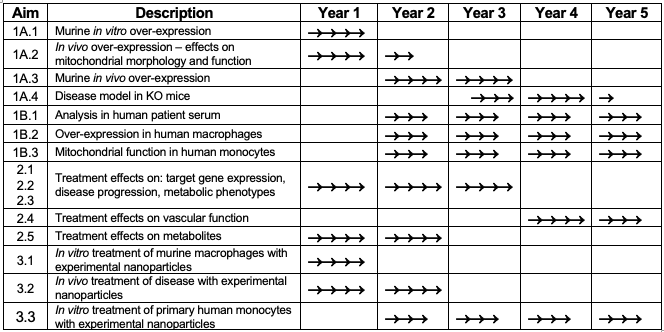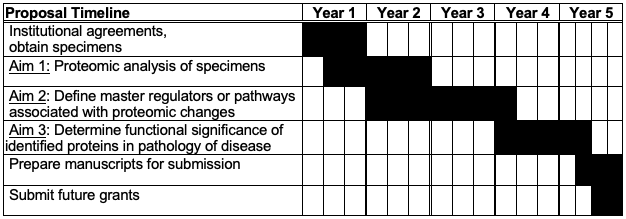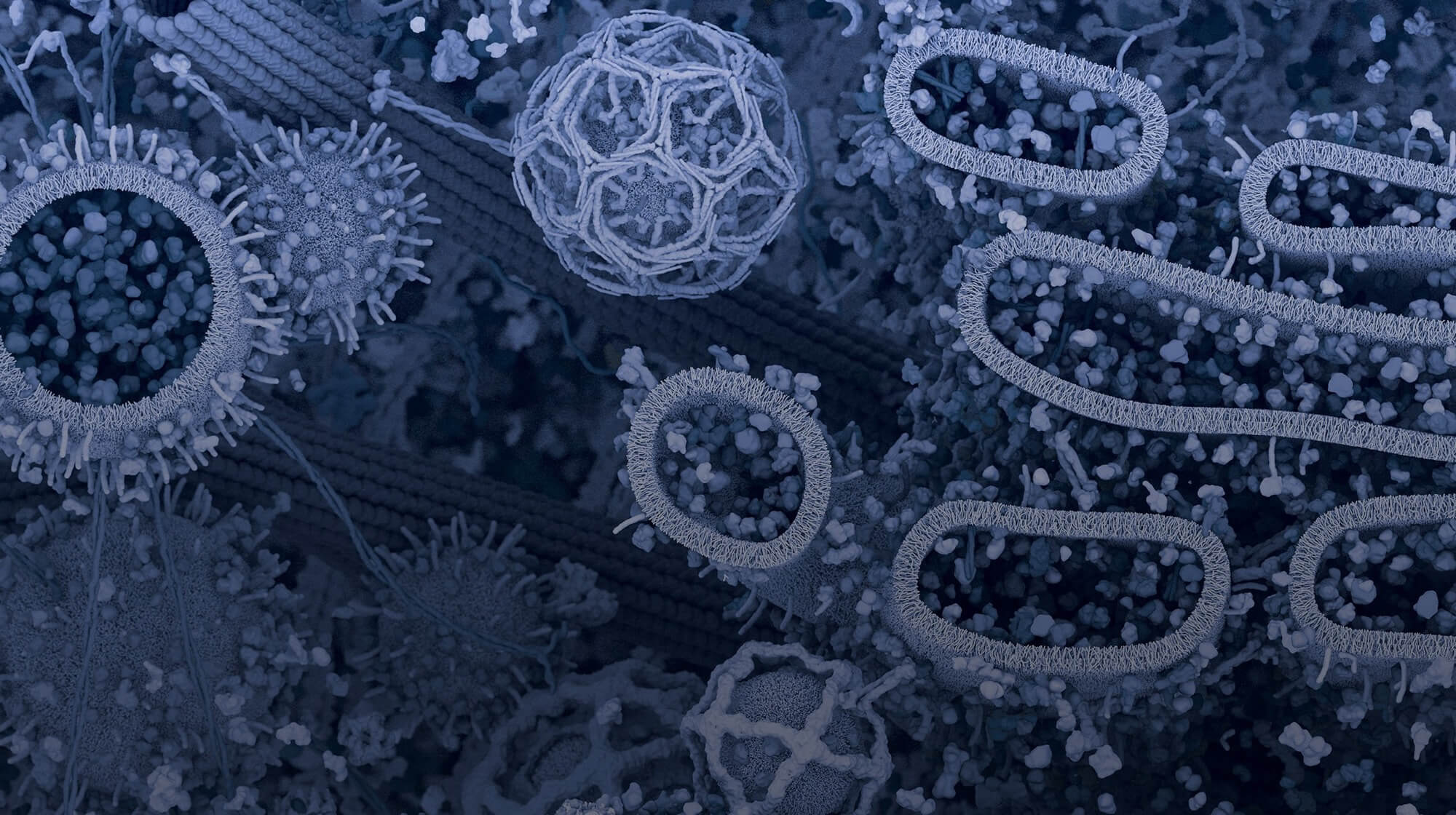Finally, the finish line is approaching! You have completed your specific aims, significance and innovation, and the bulk of your research strategy. You have sent those files for numerous rounds of pre-peer review by your trusted colleagues and mentors. Now it’s time to focus on some smaller, yet still very important details.

Detailing Your Research Timeline
While not necessarily required, the inclusion of a timeline shows the reviewers that you have thought through the feasibility of the proposal and it allows them to visualize the proposed experiments and expected duration across the entire funding period. The timeline is usually placed at the end of your research strategy and can be quite detailed, as shown in the following example, which includes the sub-aims:

Alternatively, the timeline may be more streamlined:

Writing the Future Direction Section
This short paragraph will go hand in hand with your timeline. It is different from the thoughts expressed in the Expected Results and Alternatives section of adapting experiments in the instance that one might fail or not pan out as expected. These thoughts should touch upon the significance of your research and how future projects or applications might incorporate the expected results of the current proposal. For example, data from a proposal to understand the basic molecular mechanism of a molecule could lead to a future application of a more translational project, or that translational project could lead to a new proposal for a clinical trial. Other spinoff proposals could also be envisioned—for example, a novel molecule could have potential therapeutic application to a host of different diseases. With sufficient rationale and the right collaborators, you could propose to study this novel therapy not only in autoimmune diseases, but also in neurodegenerative diseases—each disease or class of diseases would be the subject of a different grant.
Remember, this section does not have to be long, just a demonstration that your research plans and overall goals reach beyond the current proposal!
Writing a Grant Title
Never underestimate the importance of a good title. The title of your masterpiece should effectively communicate the positive impact of your proposal and capture your audience. For long-term grants (such as an NIH R01) where titles can be changed from one submission to the next, if at all possible, the title can be succinctly designed to be relevant through several renewals. For example:
- Metabolic Regulation of Insulin Secretion
For shorter-term awards, a more descriptive title may be appropriate:
- Functional Characterization of [your favorite gene] in Aortic Smooth Muscle Cell Development, Structure, Viability, and Function
A certain amount of concentration and strategic wordplay is required when devising the perfect title, but the following exercise (adapted from The Grant Application Writer’s Workbook by the NIH) is always a welcome creative breather from the heavy strategic thinking and content generation for the body of the grant.
- First, consider the relevant words and phrases in your proposal that express the most important information about your project. List these words on a piece of paper or a whiteboard. You can include your specific gene or protein of interest, but for this example, a few of the words in our list are: Brown adipocytes, vascular tone, vascular function, cardioprotection, and metabolism.
- Next, take an hour to brainstorm and arrange the words into combinations relevant to your grant. For example:
- Brown Adipocyte Regulation of Metabolism and Vascular Tone
- Regulation of Vascular Tone by Brown Adipocytes
- Mechanisms of brown adipocyte-derived [your favorite gene] cardioprotection
- Brown adipocyte-derived [your favorite gene] and vascular function
- Then, from the list you created, narrow down your Top 10 and again, show them to your colleagues both within and outside your field of study.
- Cull the list to three possibilities based on feedback, then continue to refine the finalists until one emerges as the winner!
Read the complete Grant Writing series:
- Part One: First Things First
- Part Two: Significance and Innovation
- Part Three: The Experimental Approach
- Part Four: Additional Details
- Part Five: Smaller Application Components
- Part Six: Budget Justification, Letters of Support, and More
- Part Seven: How to Interpret Summary Statement and Reviewer’s Critiques
- Part Eight: What Are My Chances?
Additional Grant-Writing Resources
While this series of posts focuses on the major portions of the grant, there may be additional bits and pieces required by the particular institution or foundation. For example, NIH grants typically also include a Project Summary (which is essentially an abstract of the grant) and a Project Narrative (which is a short section describing the relevance of the proposed work to public health). Always read the complete packet of instructions in order to ensure you submit all of the required documents for the specific grant to which you are applying.
Note: The National Institute of Allergy and Infectious Diseases provides sample applications along with corresponding summary statements. This is a good resource to see what gets people funded!



